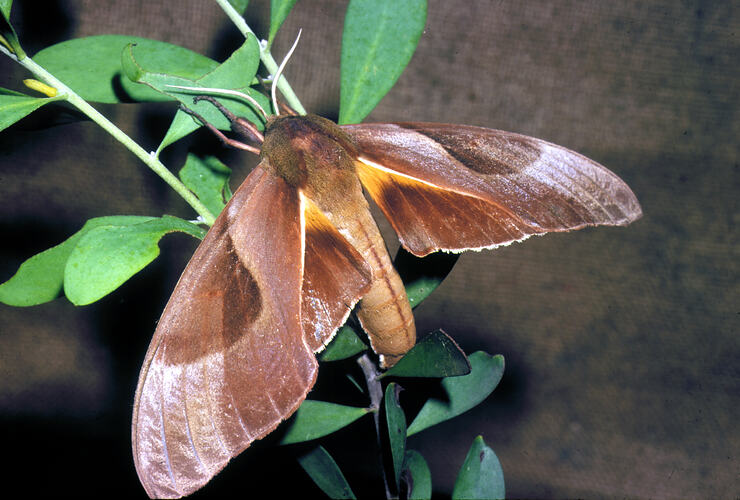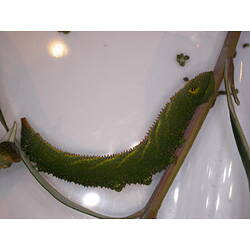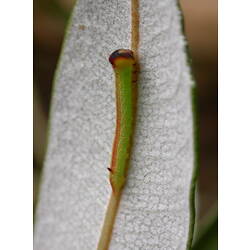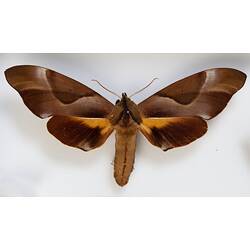General Description
Large light brown moth with a round-cornered, dark brown patch on the forewings. Hindwings are dark with a yellow or orange patch at the base. Wingspan 14-16 cm.
Biology
Eggs are laid singly or in small groups on the leaves of the larval foodplants, Saw Banksia, Banksia serrata, or Coast Banksia, Banksia integrifolia. Sometimes caterpillars are discovered wandering near the trees looking for a place to pupate (become a pupa, or cocoon). This species is Australia's largest hawk moth.
Distribution
From southern Queensland to Victoria along the coastal fringe, extending as far westwards as Sale.
Habitat
Coastal Banksia woodlands.
More Information
-
Animal Type
-
Animal SubType
-
Fast Fact
Caterpillars are green with a pointed head and an enlarged tail that resembles another head, hence the common name for this species.
-
Brief Id
Very large light brown moth.
-
Colours
Brown, Orange
-
Maximum Size
16 cm
-
Habitats
-
Diet
Herbivore
-
Endemicity
-
Commercial
No
-
Conservation Statuses
CITES: Not listed, FFG Threatened List: Not listed, EPBC Act 1999: Not listed, IUCN Red List: Least Concern
-
Flight Start
December
-
Flight End
February
-
Taxon Name
-
Scientific Author
(Pfitzner, 1805)
-
Common Name
Double-headed Hawk Moth
-
Kingdom
-
Phylum
-
Subphylum
-
Class
-
Order
-
Superfamily
-
Family
-
Subfamily
-
Genus
-
Species Name
triangularis







